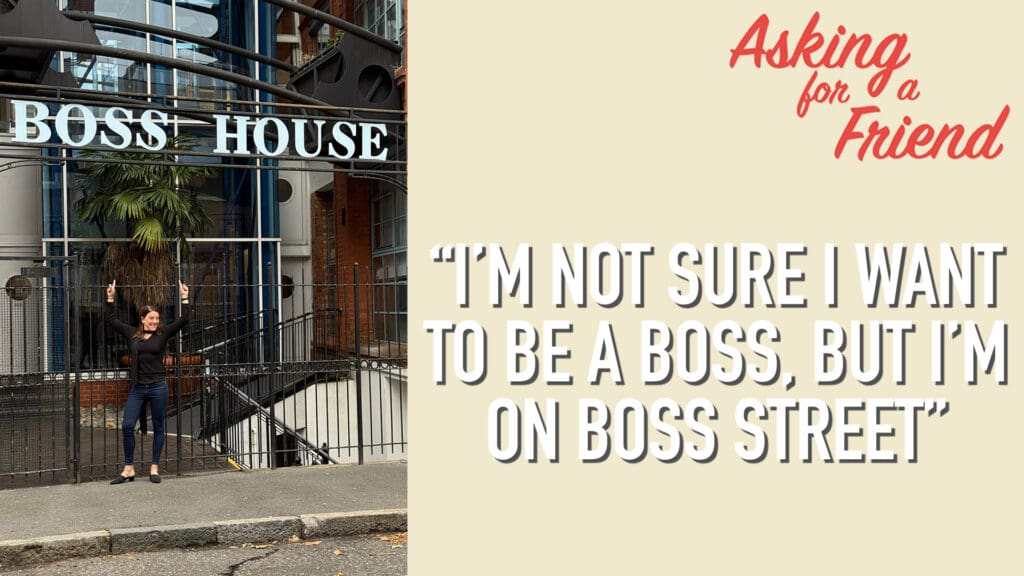Skip Level Meetings: Strategic Approaches for Executive Visits
You know executive visits and skip-level meetings are important. And , they come more naturally to some of us than others. Skip-level meetings and executive visits can backfire, or they can be brilliant.
They can be casual or deliberate. Sometimes wandering around is exactly what you and your team need. You just show up and listen, smell, and feel. And sometimes focused a focused skip-level meeting and more deliberate MBWA have a bigger impact.
The leaders I see best leveraging executive visits and skip-level meetings as a key component of their communication plan design their visits and skip-level meetings as deliberately as they do the rest of their strategy.
They consider carefully–why am I showing up? What do I want my team to think, feel, and do as a result of my being there or as a result of this skip-level meeting?
And they show up to answer that question.
5 Ways to Focus Your Executive Visits and Skip-Level Meetings
Before we start, I’m going to assume you’ve mastered the essential elements of MBWA (management by wandering around) versus OCHTC (“Oh crap, here they come.” If you missed that popular post, start here.
Beyond that, here are five approaches to strategic executive visits and skip-level meetings to reinforce and build a Winning Well culture.
1. Clarity
The Purpose: Sharing Vision; Reinforcing MIT Goals and Behaviors; Leading By Example
The Approach: On a visit like this, you’ve got one or two strategic priorities you want to be sure everyone understands. There are lots of ways to do this. Do your homework and find out about your local role models of desired behaviors — spend time with them and celebrating them. Strategic storytelling works great for a visit like this. Share your personal (or customer) stories connecting what you’re asking people to do to why.
One of my favorite clarity approaches to executive visits in my Verizon store executive role was just to spend time on the front line of the store, talking to customers and modeling the behaviors I was insistent on reinforcing. It’s hard to argue that a behavior doesn’t work when they see your leader modeling the way.
2. Capacity
The Purpose: Learning–Do your employees have the training, tools, and resources they need to succeed?
The Approach: Lots of listening. Lots of questions.
- What do you need to really improve the customer experience?
- Is the new system making your job easier or harder? Why?
- What additional training do you need?
- What do you wish I knew about _______?
3. Commitment
The Purpose: Building trusting relationships and increasing accountability.
The Approach: Reinforcing expectations and key behaviors. Paying attention to what’s really happening and the customer experience.
In our book Winning Well, we share an example of an executive who went out on a commitment tour each year despite a culture of “Gotcha” in field visits.
Avoiding the OCHTC (Oh Crap Here They Come
Bill’s story…
Bill is a retail store director who lived in a “trust but verify culture.” What this means is that he and every executive above him were expected to constantly show up in stores to experience what was happening as customers would.
Is there a bird’s nest over the front entrance risking bird poop on the customer’s head? Are customers being served in a timely way? Did the store look inviting, with all lightbulbs on and everything dusted and ready to go? Were the employees up to speed on the latest products and services?
There was no question. Knowing an executive could stop in at any moment kept everyone on their toes. The stores were undoubtedly cleaner, and the customer service was better as a result.
Of course, these visits were always stressful. The general sentiment was “no such thing as a good visit”–the best you could hope for was “not a bad one.”
Bill’s Creative Approach to Skip-level visits
This is why Bill came up with an idea to change the experience.
Every summer, instead of the usual pop-in store visits, Bill rented a van, wrapped it in the company logo and fun graphic, and hit the road visiting all his stores.
The schedule was announced ahead of time, and there was one big rule: Employees would receive only positive feedback, celebration, and fun.
If something was wrong, Bill would quietly call the manager’s attention to it. If it was a small thing like an unplugged sign, he would just plug it in and fix it himself while no one was looking.
These tours had a clear goal: To notice what was right. He did his homework and came prepared with all kinds of recognition, along with a token of appreciation for every employee.
His operations manager came along and took tons of pictures of every visit. Every evening they created an upbeat collage that included the names of everyone recognized and why. The “postcard” was emailed to the entire region every evening.
The other store directors jokingly referred to the month as Bill’s “love tour,” but Bill was confident enough to withstand the razzing.
The Impact of Bill’s Approach
The truth is, the employees loved the love.
Results skyrocketed during that time. The employees wanted to be on top of their game when the tour stopped by their store, and, as you can imagine, there was not a bird’s nest in sight. Everything was dusted and ready to go, and the employees knew all about the latest products and services.
These planned visits caused everyone to go through their checklists and remember what a great experience looked like. This was so much more effective than a “gotcha ” pop-in visit.
Yes, Bill still had to show up unannounced at other times. Winning Well requires holding people accountable. But the love tour helped remind employees of what they were capable of doing and built commitment.
4. Curiosity
Another vital type of executive visit, which seems to be quite hard for some executives, is a curiosity tour. It can be tricky.
The Purpose: To set aside what you think you know and truly listen to employees and customers.
The Approach: Show up humbly and ask strategic open-ended questions. Talk to as many folks as you can in as many roles as possible. Talk to customers. Resist the urge to talk too much or to “sell” why their struggle isn’t real. Listen. Take notes. And really consider.
Every single time I’ve gone out on a curiosity tour, I learned something useful. When I work with clients, I take this approach too. You wouldn’t believe how many times an executive will ask me, “How in the world did you figure out that was an issue?” and the answer is almost always the same.
I asked.
You can too.
No matter what kind of executive visit you are planning, if you can show up with true confident humility with a balanced focus on results and relationships, you will make a positive impact.
5. Connection
And sometimes, the most important reason to head out is to show up human to build trust and connection.
The Purpose: To build relationships
The Approach: This works best when you appear to show up with no “agenda” but just eager to learn more about your team and let them learn more about you as human beings. Sometimes this can be done around a fun teambuilding event, but it doesn’t have to be. Don’t forget to let them see a bit about who you are and why you do what you do.
More Pointers For Holding Great Skip Level Meetings
If you’re holding a more formal skip-level meeting, no matter which “C” you’re focused on, these tips will help.
1. Prepare.
Get off to a great start by really doing your homework. Understand what the team is doing very well and know what concerns to anticipate. Know something about the people attending—have a few specifics to recognize. If you can bring along a note-taker, it will make it much easier to engage in a dynamic conversation fully. But of course, you don’t want to overwhelm the room with too many extra spectators.
2. Make it personal.
I always start skip-level meetings in the same way by inviting participants to share their names and asking, “What makes you a ROCK STAR in your current job?” People like to share what they’re good at, and it’s beautiful to see what matters most to them.
3. Relate through stories.
Skip-level meetings are not only a great way to find out what’s on people’s minds, but they are also a great way to reinforce key messages through strategic storytelling. Share your stories, and invite them to share their stories and then summarize the themes. For example, “Tell me a story of when you turned around a really frustrated customer.” Or, “Do you have a story about the team leader who was most helpful to you?”
4. Ask positively framed open-ended skip-level meeting questions.
Framing your questions in a positive light makes it more comfortable for employees to share ideas for improvement.
- What’s the best part of working here?
- How do you know how you’re doing? In which areas would you like more feedback?
- If you were in my shoes and could change one thing to make your work easier, what would that be?
- What could we do to improve the customer experience?
- Which of your tools/resources do you find most helpful? Why?
- If you could invent a tool or resource to help you do your job, what would it be, and how would you use it?
- What does your team leader do that’s most helpful to you?
- If you were the team leader, what would you focus on (or do more of) and why?
- How can I help you with additional support or resources?
- What specific questions haven’t I asked that you wish I would?
5. Follow-up.
Share a summary of your notes and key takeaways with the group. When giving readouts to others, including the “skipped” leaders, be curious, not accusatory. Remember, there are always many interpretations of every story.
Avoid these 7 Big Mistakes in Skip Level Meetings
1. Not Doing Your Homework
Sure, you’re their bosses’ boss. They should be glad you’re there, right? Hmmm … Want to ensure you make an impact? Learn what’s up with the people in the room. Get their names. Know what’s driving them crazy. Be able to speak articulately about a few of their biggest accomplishments.
2. Showing Up Needy
Yes, I get it. You’re sandwiching this skip-level in-between really important calls with C-level execs, vital customers, your boss. Go minimalist here. What do you need? A closed-door in-between your skip-level meetings? Ask for that. Otherwise, show up as low-maintenance as you can (and ensure your assistant gets this too.)
3. Sticking To Your Agenda
The real magic of skip-level meetings is never planned. Even if your team gave you a carefully crafted list of conversation starters, stay real and open to where the conversation may lead.
4. Talking Too Much
Resist the urge. You will learn way more by listening.
5. Asking the Wrong Questions
I often see leaders ask leading questions that ensure they get told what they want to hear. You already know what you think. Have the courage to ask questions that might surface answers that frustrate you. It’s better to know what people are really thinking.
6. Failing to Recognize Contributions
Your people want to know that you know what they’re up to. Be sure you do and tell them.
7. Neglecting to Follow Through
If you promise to look into something, be sure you do. If you promise to get something fixed right away, do it. And just as importantly, be sure you close the loop and let them know. Making commitments without follow-through does more harm than not showing up at all.
Great leaders spend lots of time talking to the people closest to the customer. It’s worth the extra effort to dig deep and do it right.
 Related Thoughts
Related Thoughts
You can download the first few chapters of our book, Courageous Cultures: How to Build Teams of Micro-Innovators, Problem Solvers, and Customer Advocates (including the foreword from Dr. Amy Edmonson) here.
Town Hall Meetings: 6 Mistakes to Avoid in Your Leadership Message
My Fast Company Article on Listening: 7 Ways to Build a Culture of Listening
And our article in Entrepreneur: How to Be the Leader Your Employees Want to See Walk Through the Door.









0 Comments
Trackbacks/Pingbacks